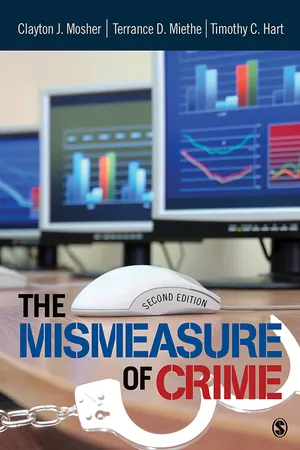Psychology
Self-Report Techniques
Self-report techniques in psychology refer to methods of gathering data directly from individuals about their own thoughts, feelings, and behaviors. These techniques often involve questionnaires, surveys, interviews, or self-assessment scales, and are used to gain insight into subjective experiences and perceptions. Self-report data can provide valuable information for understanding individual differences and psychological phenomena.
Written by Perlego with AI-assistance
Related key terms
1 of 5
4 Key excerpts on "Self-Report Techniques"
- eBook - ePub
Research Methods in Clinical Psychology
An Introduction for Students and Practitioners
- Chris Barker, Nancy Pistrang, Robert Elliott(Authors)
- 2015(Publication Date)
- Wiley-Blackwell(Publisher)
6 Self-Report MethodsKEY POINTS IN THIS CHAPTER
- Self-report methods, such as interviews and questionnaires, ask the person for information directly.
- Their advantage is that they give you the person’s own perspective; their disadvantage is that there are potential validity problems (e.g., people may deceive themselves or others).
- The main qualitative self-report approach is the semi-structured interview.
- Qualitative interviewing is a distinct skill, related to but different from clinical interviewing.
- The main quantitative self-report approach is the written questionnaire, but structured interviews and internet surveys are also used.
- There are several principles to follow in constructing quantitative self-report instruments.
- Response sets, such as acquiescence and social desirability, refer to tendencies to respond to items independently of their content. They need to be taken into account when designing and interpreting self-report measures.
When you want to know something about a person, the most natural thing is to ask. Research methods that take the approach of asking the person directly are known as self-report methods, and mainly take the form of interviews, questionnaires, and rating scales. They are the most commonly used type of measure in the social sciences in general and in clinical psychology in particular.For example, suppose that you have set up a new counseling service for adolescents and want to evaluate its effectiveness. You ask the service users to rate the severity of their problems before and after counseling and how satisfied they are, using standardized instruments. You also use a semi-structured interview to assess the adolescents’ overall experience of the service, including what they feel they has changed, what they found helpful, and any specific criticisms they had of it. Client satisfaction studies and clinical effectiveness studies - eBook - ePub
- Clayton J. Mosher, Terance D. Miethe, Timothy C. Hart(Authors)
- 2010(Publication Date)
- SAGE Publications, Inc(Publisher)
SELF-REPORT STUDIESRespondents are a tricky bunch, and they do not always behave the way a researcher would wish or expect. In fact, surveys would be far more reliable without them.—Coleman & Moynihan (1996, p. 77)S elf-report studies of crime were developed in the 1940s and 1950s, largely in response to concerns among criminologists that official measures of crime were systematically biased and provided a distorted picture of the nature and extent of crime and its correlates.One of the primary advantages of self-report studies is that the information individuals provide regarding their behavior is not filtered through any official or judicial process. The criminal justice funnel, which illustrates how, at each stage of the system, fewer and fewer illegal behaviors are siphoned off for official crime counts, does not operate with respect to self-report data.However, what individuals tell us about their behavior may or may not be a reliable and valid source for determining how involved they are in criminal activity. Memories of events—even of ones as dramatic as criminal episodes— may be fuzzy rather than clear, especially when it comes to recollecting the time period in which they occurred or the sequence of their occurrence. The questions that researchers ask may be phrased in ways that are different from the way people think of their behavior. For example, asking “In the past six months, have you abused or aggressed against a family member?” may elicit a different response than “In the past six months, have you slapped, hit, or punched anyone in your house?” Even with good nonjudgmental questions,however, respondents may be reluctant to answer fully and truthfully—at least partially because of the fact that they are being asked to admit to behaviors that might result in their arrest if the actions became known to authorities.One purpose of this chapter is to make you a savvy consumer, as well as evaluator, of self-report measures of crime. Because of its importance to both self-report and victimization data, we begin with a brief discussion of survey methodology. We then review the methodology and findings of some of the more prominent self-report studies, including the National Youth Survey (NYS), the National Longitudinal Study of Adolescent Health (Add Health), the Monitoring the Future (MTF) Survey, and the National Household Survey on Drug Abuse (NHSDA, now known as the National Survey on Drug Use and Health [NSDUH]). This is followed by a review of a prominent and enduring debate in the discipline of criminology regarding the connection between social class and crime, a debate that led to further refinements and improvements in self-report methodology. We then discuss self-report data from known offenders, which have provided particular insights into the crime patterns of individuals who have been apprehended by the criminal justice system. The chapter concludes with an examination of studies focusing on the reliability of self-reported data on drug use. - eBook - PDF
- John R. Wilson, Sarah Sharples, John R. Wilson, Sarah Sharples(Authors)
- 2015(Publication Date)
- CRC Press(Publisher)
Of course, one of the goals of so-called subjective methods may in fact be to reduce the impact of this subjectivity on the outputs from the tools applied. This chapter describes some different types of tools that an E/HF practitioner may consider using and presents considerations that those using such tools should address whilst using them to inform design requirement specifications and evaluations. T YPES OF S ELF -R EPORT M ETHODS Self-report methods often consider the psychological aspects of work. Psychological measure-ment can be broken down into three types: psychophysical , scaling and psychophysiological. Psychophysical methods refer to a specific class of measures that quantify the relationship between a physical characteristic of the work environment or system (e.g. noise level, temperature, seating design) and the human sensing of that characteristic (e.g. perceived volume, warmth or comfort). Scaling can be used to elicit perceptions of such senses, such as ratings of comfort, but can also be used to report on constructs that are related to the combined effects of a set of different char-acteristics of a work system (rather than a single physical characteristic as is usually considered in psychophysics), such as rating of job satisfaction, workload or situation awareness (see Chapters 18 and 19). Psychophysiological methods present the biological reaction to a psychological stimulus (e.g. an increase in heart rate that might occur as a result of experiencing stress). In addition to these methods, which all attempt to quantify the experience of an individual to some extent, there is a fourth class of method, termed here structured reporting , which covers methods including structured group and individual interviews, verbal protocols, open-ended questionnaire items and longitudinal methods such as diaries. General Considerations in Collecting and Observing Participant Responses ................................ - eBook - PDF
Introduction to Personality
Toward an Integrative Science of the Person
- Walter Mischel, Yuichi Shoda, Ozlem Ayduk(Authors)
- 2012(Publication Date)
- Wiley(Publisher)
Many tests are in the form of self-reports —a term that refers to any statements people make about themselves. Respondents are asked to react to sets of questions or items with one of a limited number of prescribed choices (e.g., ‘‘yes,’’ ‘‘no,’’ ‘‘strongly agree,’’ ‘‘frequently,’’ ‘‘don’t know’’), not unlike multiple choices on tests in academic courses. Examples are shown in Figures 2.1 and 2.2. Self-reports offer quick ways of getting information the person is willing and able to reveal. For example, Table 2.1 shows a self-report measure of anxiety with multiple items. The responses are scored and added to estimate the person’s overall self-reported level of anxiety. Some tests involve performance measures. For example, researchers interested in seeing how personality measures in childhood predict academic performance in later life might use measures like the SAT as an outcome assessment. Likewise, those interested in anxiety might use a measure in which the ability to repeat long strings of numbers under difficult, stressful conditions is measured. On this measure, the examiner verbalizes long lists of numbers and the respondent has to repeat them backward, knowing that a poor score will be taken as an index of low intelligence. 2.4 Differentiate between performance and self-report tests. Projective Measures Projective tests were developed more than 60 years ago and continue to be popular in clinical use. With these methods, assessors present the person with ambiguous I have many fears. Most police officers are really friendly. Yes No Unsure (Circle your answer.) -3 -2 -1 0 1 2 3 Strongly disagree Strongly agree (Circle the number that indicates your degree of agreement or disagreement.) I suffer from many aches and pains. 1 2 3 4 5 6 7 Lowest Highest (Check the degree to which this statement is true for you.) Falling in love can be more trouble than it's worth.
Index pages curate the most relevant extracts from our library of academic textbooks. They’ve been created using an in-house natural language model (NLM), each adding context and meaning to key research topics.



